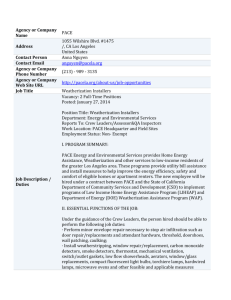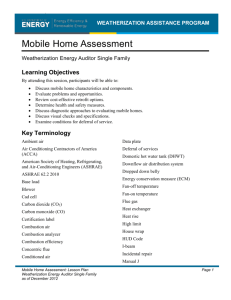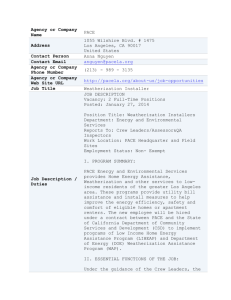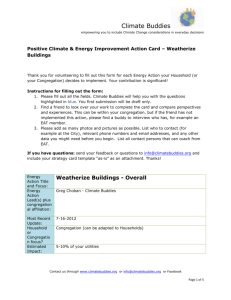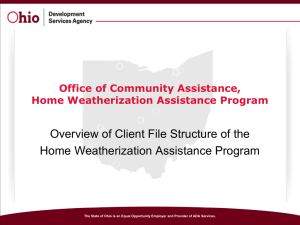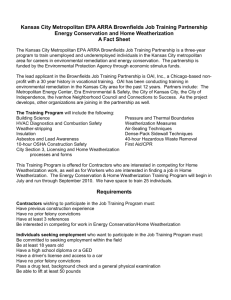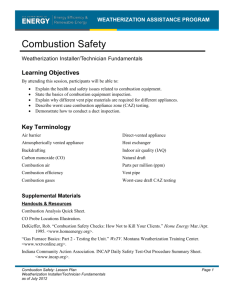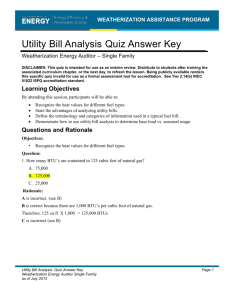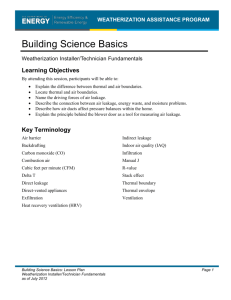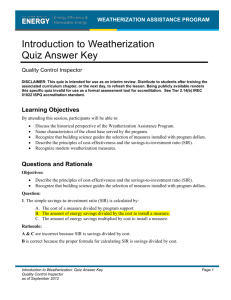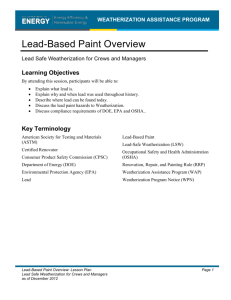Energy Efficient Home - North State Building Industry Foundation
advertisement
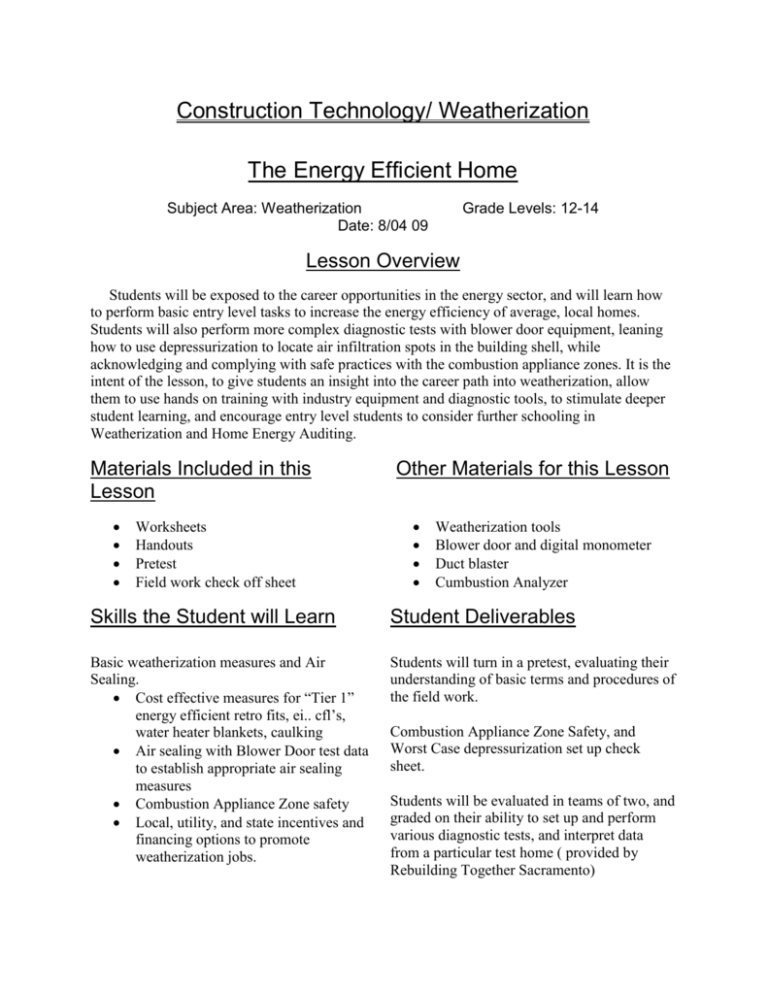
Construction Technology/ Weatherization The Energy Efficient Home Subject Area: Weatherization Date: 8/04 09 Grade Levels: 12-14 Lesson Overview Students will be exposed to the career opportunities in the energy sector, and will learn how to perform basic entry level tasks to increase the energy efficiency of average, local homes. Students will also perform more complex diagnostic tests with blower door equipment, leaning how to use depressurization to locate air infiltration spots in the building shell, while acknowledging and complying with safe practices with the combustion appliance zones. It is the intent of the lesson, to give students an insight into the career path into weatherization, allow them to use hands on training with industry equipment and diagnostic tools, to stimulate deeper student learning, and encourage entry level students to consider further schooling in Weatherization and Home Energy Auditing. Materials Included in this Lesson Worksheets Handouts Pretest Field work check off sheet Other Materials for this Lesson Weatherization tools Blower door and digital monometer Duct blaster Cumbustion Analyzer Skills the Student will Learn Student Deliverables Basic weatherization measures and Air Sealing. Cost effective measures for “Tier 1” energy efficient retro fits, ei.. cfl’s, water heater blankets, caulking Air sealing with Blower Door test data to establish appropriate air sealing measures Combustion Appliance Zone safety Local, utility, and state incentives and financing options to promote weatherization jobs. Students will turn in a pretest, evaluating their understanding of basic terms and procedures of the field work. Combustion Appliance Zone Safety, and Worst Case depressurization set up check sheet. Students will be evaluated in teams of two, and graded on their ability to set up and perform various diagnostic tests, and interpret data from a particular test home ( provided by Rebuilding Together Sacramento) Length of Lesson: 4 Days, ( 8 hours lecture, 24 hours Lab) Basic Weatherization Techniques for Tier 1 Energy Efficient Retro Fit 2 hours Lec./ 6 hours Lab- Activities will include training for simple measures that will work in every home including changing lights to CFL’s, installing low flow showerheads and faucet aerators, and weather stripping doors and windows. Also, appliance awareness training will help students recognize older appliances that are nearing the end of their useful life, and might be candidates for replacement with Energy Star appliances. Hot water heater care, and combustion safety will also be discussed. Occupant behavior and education will also be addressed. Combustion Appliance Zone Safety 2 hours Lec./ 6 hours Lab- This lesson includes all topics of residential combustion safety, including work site safety, identification of CAZ (Combustion Appliance Zone) Zones, proper ventilation requirements, Worst Case Depressurization Set up, Appliance testing for spillage, draft and carbon monoxide, and proper working conditions. Envelope Air Tightness and Blower Door Testing 2 hours Lec./ 6 hours Lab- This lesson will examine the energy consumption for space heating and space cooling, and the connection to air infiltration as a major contributor to loss of energy. Students will learn and measure Air Changes per hour from driving forces like wind, and the stack effect. Topics in Air leakage vs. ventilation will be discussed, and building code requirements on required ventilation will be covered. Units of measure, including CFM, Pascal, CFM 50, and ACH will be used to determine total shell leakage with the Blower Door test, with the house depressurized to -50 pascals. Cost effective sealing strategies will be discussed and implemented for best performance based on ASHRAE standards for ventilation. Infrared cameras may be used if weather conditions permit. Duct sealing and Attic Insulation 2 hours Lec./ 6 hours Lab- The conditioned air distribution systems will be discussed, along filters, and static pressures. Techniques in duct leakage testing and repair will be examined, and diagnostic tools will be used to determine the condition of the duct system. Instructor will conduct full system test with Duct Blaster equipment, and then assess student learning based on small group field observations. Students will work in groups of two, and perform the diagnostic field tests with the duct blaster, locate and repair duct system to within Title 24 allowances for tightness. Attic insulation condition will be visually inspected, and checked for Quality Insulation Installation, and replacement or repairs will be implemented. Safe work practices and Personal Protective Equipment for attic work will be observed. Enrichment Suggestions Include here any suggestions for extending this lesson. Student Resources Write any additional student resources here such as online resources and worksheets. State Standards Met Include a bulleted list of state standards by number with an abbreviated description of the standard Lesson Plan Relevance To Externship Rubric for the (type in the title) Project Student Deliverables 1 Exceeds Expectations 2 Meets Expectations 3 Approaches Expectations 4 Fails to meet Expectations
